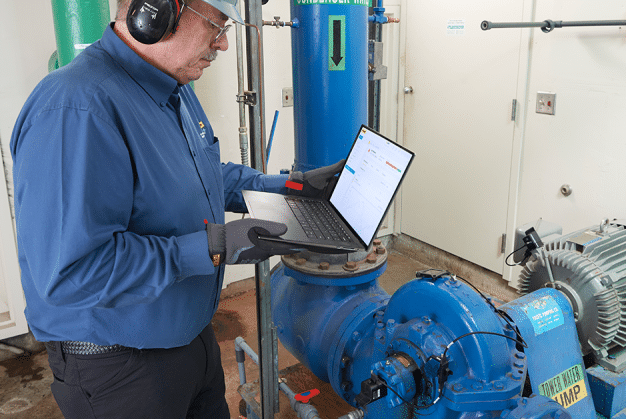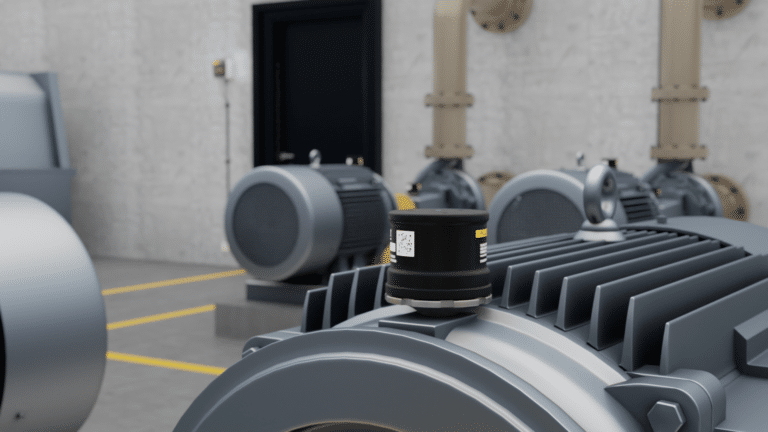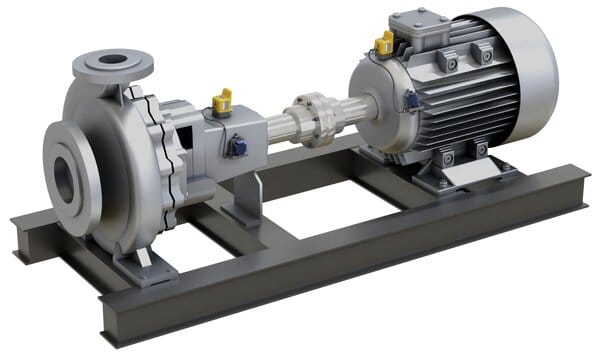
All machines eventually fail. It is not a question of if, but when. However, seasoned maintenance teams know that vibration patterns can help tip them off when a machine requires repairs. The goal of measuring and analyzing vibration patterns is not to eliminate vibration completely, because all machines with rotating parts vibrate. Instead, asset condition monitoring can identify changes in normal vibration patterns that reveal much about machine health.
Vibration data can indicate conditional change — problems that can lead to premature component wear. By collecting and analyzing that data, maintenance professionals can identify potential failure points and prevent them before downtime or damage occurs.
How Vibration Analysis Works
Vibration measurement tools — whether wireless vibration sensors or handheld vibration analyzers — used on machine bearings can measure vibration frequencies from the rotating shaft to the surface of the machine. This data is then sent from the device to software that allows maintenance teams to monitor assets remotely. By reducing their trips to machinery in hard-to-reach or potentially hazardous areas, teams stay safer and have more time to devote to integral tasks.
When the data does indicate a fault, maintenance teams decide whether to perform more testing to gather further data or schedule a repair. Handheld vibration measurement tools can be used either as part of route-based maintenance or to gather additional data from specific machines as needed. Decisions about repairs should take into account the history of the asset, its criticality, and the severity of the fault.
There are a variety of tools suitable for a wide range of asset types and budgets. Some sensors take frequent, detailed readings and convey a great deal of data. Screening sensors take quick snapshots of more limited data. And today’s handheld tools are so intuitive to use that even entry-level technicians can quickly obtain accurate, repeatable measurements.
Fluke Reliability offers a range of machine-mounted and handheld vibration measurement tools that can suit any team’s needs. The Fluke 3563 Analysis Vibration Sensor is a powerful wireless sensor that enables around-the-clock vibration monitoring and analysis. It automatically generates alerts when an asset’s condition falls outside certain thresholds. The Vibscanner 2 is an intuitive handheld vibration measuring device that quickly captures data across three axes with its triaxial sensor. And the VibXpert II is a portable all-in-one system for effective vibration monitoring, which can also be used for operational balancing.
Vibration Analysis is Essential to an Effective Condition-Based Maintenance Strategy
Traditional calendar-based maintenance schedules perform actions based on a time frame or set dates — or even wait for things to break down before repairing them (also known as run to failure). This approach is costly and ineffective.
Instead, condition-based maintenance is much more comprehensive and extends the life of an asset while saving valuable time and money. Condition-based maintenance involves using techniques such as vibration monitoring and analysis for clues about a machine’s health and performance. When a machine’s condition changes, maintenance teams must decide how and when to respond. Vibration analysis makes this easy.
When vibration sensors are paired with cloud-based analysis software, maintenance technicians can access vibration data from mobile devices wherever they are. Analysis software can track and trend asset vibration data over time, making faults easier to spot and leading to improved decision-making. And it can help maintenance teams make sense of the vibration data collected and determine the most effective corrective actions when needed.
Vibration monitoring is a scalable way of collecting data from numerous assets. With vibration sensors monitoring assets around the clock, maintenance teams can have a clear picture of asset health while spending less time taking manual readings. Vibration monitoring frees up teams so they can focus their time on the assets that need their attention.
Vibration Analysis Can Reveal Four Types of Faults
Vibration analysis has been an established practice for decades. As a result, there are robust algorithms to identify and diagnose machine faults. Reading and recognizing those patterns takes extensive training and experience, but 90% of machine faults fall into four common categories: misalignment, imbalance, looseness, and bearing wear. Vibration analysis can help you quickly identify and resolve each of these faults before they become bigger problems or lead to unplanned downtime. When failure mode patterns emerge, they can identify potential faults in well in advance.
1. Misalignment
When machine shafts are out of alignment, the increased force will cause heavier mechanical loads, energy waste, and accelerated component wear. Worst-case shaft misalignment scenarios can include cracked or broken shafts, which is a potential safety hazard that puts maintenance personnel at risk.
2. Imbalance
Abnormal weight on a shaft causes increased vibration when the unbalanced weight rotates around the machine’s axis. This can lead to increased bearing and seal wear, energy waste, and decreased productivity.
3. Looseness
A shaft, foundation, or component can come loose, causing potentially destructive vibration and increasing the wear of bearings and seals. Looseness can also result in improper fit between components, loose bolts, or baseplate problems.
4. Bearing wear
Excessive loads, poor lubrication, or incorrect installation will cause bearing wear, eventually leading to failure. Bearing rollers traveling over a worn or damaged area can cause vibration, as can a drive belt that is breaking down.
Vibration Analysis Prevents Failures and Unplanned Downtime
Screening assets to detect vibration abnormalities minimizes unnecessary calendar-based maintenance practices. By collecting vibration data over time, maintenance teams can identify and diagnose faults in advance—reducing uncertainty and maintenance spending. And because planned maintenance activities carry less risk than urgent, reactive repairs, you can reduce unplanned downtime and improve worker safety.
Early warnings give teams the opportunity to focus on the machines that need attention and to plan on the best time to fix failures. Moving away from a reactive maintenance strategy helps teams optimize their time and energy and increase the availability and reliability of their assets.
Underlying causes of vibration can shorten the life of equipment and components. Finding and fixing impending faults before they cause damage means assets can be kept up and running in peak condition longer. Accurate, real-time knowledge of asset health reduces production stoppages and improves the accuracy of productivity estimates. Scheduling and inventory can be optimized. All of this directly benefits the bottom line.






